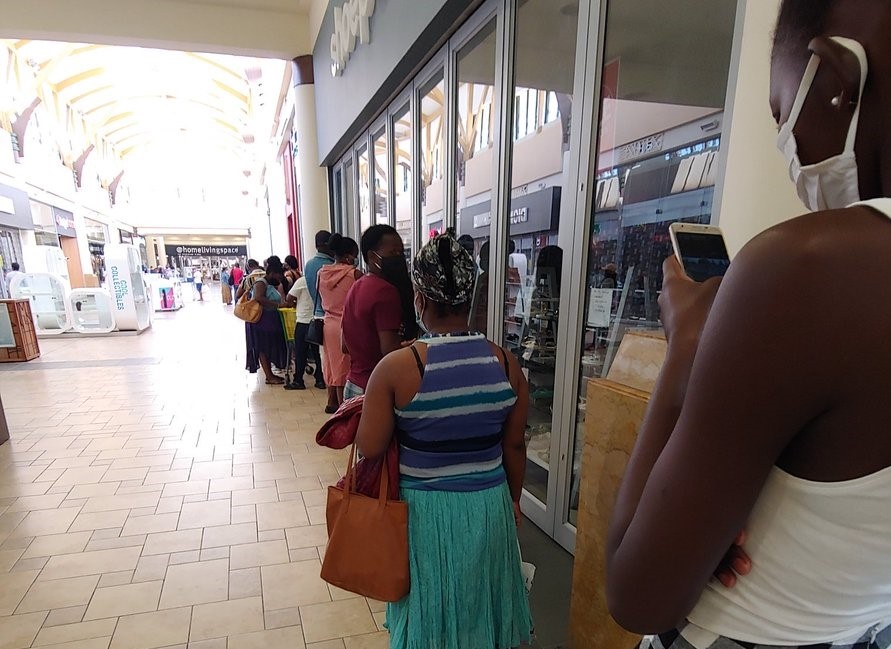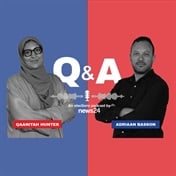
We have not "flattened the curve" with the lockdown, and our current trajectory of new infections, uncontained by the lockdown, is very worrying, writes Alex van den Heever.
South Africa's Covid-19 pandemic trajectory is far from clear.
While the lockdown initially impacted on the trajectory, the effects were predictably limited.
The initial decline in the reproduction rate R was largely attributable to the suppression of the pandemic in the affluent communities.
It went from around 2.2. before the lockdown (one infected person infects 2.2 people over a period of four days) to 0.7.
This lasted for a mere 12 days before we shifted to around 1.1 to 1.2.
Unfortunately, due to inadequate screening and testing in all the provinces, except the Western Cape, the reported infections are unlikely to be a true reflection of what is actually happening.
The new numbers driving the trajectory are almost exclusively driven by the Western Cape, which is erroneously described as the epicentre of the epidemic.
An epicentre is the centre-point of an outbreak, not the largest detected outbreak.
Provinces such as Gauteng, KwaZulu-Natal, Eastern Cape and the Free State have demonstrated implausibly low increases, which are in all likelihood attributable to poorly implemented screening, testing and tracing strategies.
If we dismiss the rather disturbing implications of a failed testing and tracing strategy in much of the country and take the disease trajectory as it is, we need to ask whether an R of around 1.2 represents a concern.
Quite evidently the government is unconcerned. After all, 1.2 is better than 2.2.
However, if we project the trajectory forward at the current level of R, we can expect around 3 000 new infections per day by 31 May and 26 000 new infections per day by 30 June.
After that, the numbers become seriously large.
The mantra that led to complacency
This is hardly a scenario for complacency. The question, however, is where does the complacency come from?
The answer may lie with the oft-repeated mantra that the government has "flattened the curve".
According to this logic, they have assumed that a lowered R reduces the peak of the epidemic.
This is, however, false.
Any R above 1 will result in an inexorable rise in new infections, until such time as immunity levels reduce the R naturally by diminishing the availability of people to infect.
For this point to be reached, however, millions of South Africans would need to have been infected and recovered.
The active flattening, in fact, only occurs when R is maintained at 1 or below 1 through public health measures.
As the analytical work underpinning a so-called flattening has never been made public, including all assumptions, it is hard to address directly the quality of the advice that is being given.
There are four implications to this.
First, the new infection levels we are seeing are a serious cause for concern.
Second, the failure of most of the provinces to screen, test and trace adequately is distorting our understanding of the trajectory of the pandemic.
Third, the lockdown has failed to bring R down to below 1 - despite a massive cost to the economy.
Fourth, the government doesn't appear to have a clear strategy beyond the lockdown - as it apparently assumes it has "flattened the curve".
All successful public health strategies around the world depend on testing and tracing at scale.
Within the South African context, it was predictable the pandemic would first go into decline and structurally resurge as the infections moved into the high-density communities who can't socially distance and, therefore, don't benefit from the lockdown.
We see this in the double hump new infection curve, which reflects the transition from one type of community to another.
The lockdown did buy some time - at great social and economic cost.
The question is whether this time was properly used.
What we should have done
In this time what should have been done, instead of the mysterious deployment of Cuban doctors and a litany of obscure prohibitions and enforcements, was to scale up smart screening, testing, contact tracing and quarantining.
Quite obviously, the cost of this programme at many billions would be better than prolonged lockdowns.
The required health protocols for employers, schools and public authorities should also have been developed, tested and implemented. It is clear that very little of this was happening.
Dr Kamy Chetty, the CEO of the National Health Laboratory Services (NHLS), made a bunch of promises in March 2020.
"Twenty (20) more mobile vehicles have been procured and will be deployed in April.
"… with all the five sites functional, the NHLS has the capacity to process 5 000 samples in 24 hours. This number will increase to 15 000 in 24 hours in April. At the end of April, the NHLS will be able to process approximately 36 000 test in 24 hours."
However, despite this, South Africa has been managing only around 3 000 to 5 000 per day, a number too low to manage the pandemic pre- and post-lockdown.
In March, the public sector was so ineffective that 93% of all tests were by private laboratories.
South Africa, however, needs to be doing upward of 20 000 per day at least.
The obstacles to achieving the stated targets are that South Africa is back of the queue when it comes to medical products at the moment.
Well, if this were the case, why is the government not shouting from the rooftops at this blatant unfairness? Why is there only passive acquiescence when it is so vocal on lesser matters?
So, what else has the period of lockdown bought us?
There were proposals to open schools without health protocols.
Funeral gatherings are permitted up to 50 people, despite their proven risk of spreading the disease.
There are no health protocols for food distribution points and sites for collecting social grants.
In fact, the health department completely failed to coordinate with Sassa on grant distributions and food parcels, despite this being an obvious focal point for the active management of physical distancing, the distribution of masks, screening and testing.
Vulnerable old people, instead of being isolated and protected, are expected to stand in queues without physical distancing for hours and hours.
Surely, someone thought of this during March and April?
Overall, it is hard to understand the current priorities of the government.
The combination of excessive enforcement of non-essential measures, together with the failure to take forward common sense measures, is concerning and plainly losing the trust of society.
The court challenges we see today are a sign of this. It would not occur if the measures made sense, and if valid information was made public which supported decision-making.
The government will go to court to defend a meaningless ban on cigarettes, but will not ramp up testing or protect old people collecting social grants.
The government will arrest someone for having alcohol in a car, but will happily make vulnerable people crowd together for food parcels.
The government will spend millions on doctors from Cuba - but won't provide free protective masks to all poor people.
In conclusion, it is important to state that we have not "flattened the curve" with the lockdown, and that our current trajectory of new infections, uncontained by the lockdown, is very worrying.
Future generalised lockdowns are also not feasible in South Africa, and will in any case fail to bring R down below 1 as was the case to date.
Our only strategy going forward is, therefore, to ramp up screening, testing and tracing and to do whatever it takes to actively suppress the pandemic through targeted measures.
Our strategy cannot be to convert ice rinks to morgues and to prepare mass grave sites.
We, however, still have a choice.
But the options are narrowing by the day.
- Professor Alex van den Heever is chair in the field of Social Security Systems Administration and Management Studies at the University of the Witwatersrand's School of Governance.
Download the new News24 app for more in-depth and exclusive coverage of Covid-19 and its impact on South Africa and the world.




 Publications
Publications
 Partners
Partners























